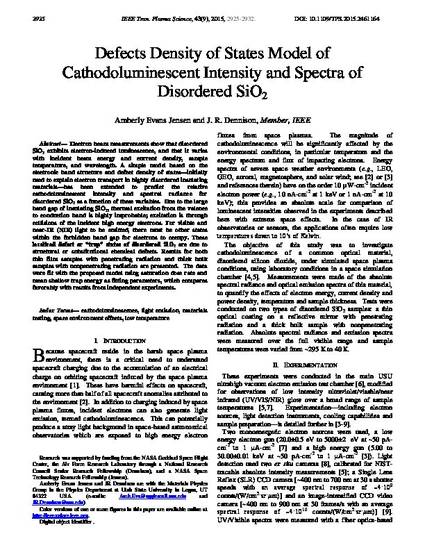
Electron beam measurements show that disordered SiO2 exhibits electron-induced luminescence, and that it varies with incident beam energy and current density, sample temperature, and wavelength. A simple model based on the electronic band structure and defect density of states—initially used to explain electron transport in highly disordered insulating materials—has been extended to predict the relative cathodoluminescent intensity and spectral radiance for disordered SiO2 as a function of these variables. Due to the large band gap of insulating SiO2, thermal excitation from the valence to conduction band is highly improbable; excitation is through collisions of the incident high energy electrons. For visible and near-IR (NIR) light to be emitted, there must be other states within the forbidden band gap for electrons to occupy. These localized defect or “trap” states of disordered SiO2 are due to structural or substitutional chemical defects. Results for both thin film samples with penetrating radiation and thick bulk samples with nonpenetrating radiation are presented. The data were fit with the proposed model using saturation dose rate and mean shallow trap energy as fitting parameters, which compares favorably with results from independent experiments.
Available at: http://works.bepress.com/jr_dennison/538/
